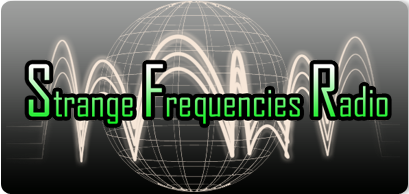The Flashlight Experiment
July 9, 2010 41 Comments
Most people who have watched the television show “Ghost Hunters” on SyFy will probably recognize what has commonly been referred to as the “Flashlight experiment” in the paranormal community. Recently featured in the second season finale of Ghost Hunters Academy (also on SyFy), the “experiment” has been getting a fair amount of publicity.
In case you aren’t familiar with it, please allow me to describe the scenario. Typically, several ghost hunters will sit in a darkened room around a flashlight which is normally set on the floor or on a flat surface of some kind, and attempt spirit communication by asking any ghosts present to turn the light on and off. Oftentimes direct questions will be asked. The light turning on or off, seemingly on its own, is then considered to be an answer from beyond.*
Having seen this on television, in person at various “haunted hotspots,” and in talking about it’s use with friends of mine, it has become clear that a fair number of people believe it is an effective method of talking with ghosts. I am hoping this article today will help provide a very clear non-paranormal explanation.
First, there is the use of the flashlight itself. A friend recently asked me point blank how I would explain the effect. I replied that it is really quite simple: people are using a flashlight incorrectly. You see, before the “flashlight experiment” can be carried out during a paranormal investigation, the flashlight must first be slightly tampered with. In fact, what investigators do, depending on their particular model, is either push the switch or twist the cap precariously between the on and off position, thus making the instrument that much more delicate. At this position, little if any interference from a person or the environment is required to cause the light to turn all the way on, off, or flicker.
A flashlight contains many parts that come together to make the instrument work. Among these parts are contact strips, the switch itself, and the lamp. Batteries, of course, are also essential to the use of most models. According to Enegizer.com, “when a flashlight switch is pushed to the ON position, it makes contact between two contact strips, which begins a flow of electricity, powered from the battery.” Activated by the flow of electrons, the filament, or LED, in the tiny lightbulb (lamp) begins to glow, producing light. Disrupting the flow of this electricity, which is exactly what happens when you place the flashlight between the ON/OFF positions, creates an open circuit and, as a direct result, it doesn’t work right.*
But what, you may ask, about the responses ghost hunters seem to get from ghosts in regards to their questions? Now that we know the flashlight is being used improperly, and is malfunctioning as a result, these alleged responses become suspect. Furthermore, how can we actually know a ghost is communicating? Using this same method, I’ve made it appear I am having a conversation via flashlight with anything from an invisible purple dinosaur to a flying spaghetti monster. Even my dirty gym socks joined the party from miles away once. “If my gym socks are present here, please turn the light on.” The light turned on. “You are? Wow. Here I was just looking for ghosts!”
One of the major problems with this method is how unscientific it is used in conjunction with a ghost hunt. Paranormal researchers are taking the flashlight only to locations they believe may be haunted and are using the flickering light to prove their case! Why aren’t they testing the validity of the method in locations they don’t believe to be haunted; a gas station bathroom, next to the litter box in your friend’s basement, your own house? If the “flashlight experiment” is attempted in a non-haunted setting and behaves in a similar fashion, why would you believe it would be any different in a place you think is crawling with ghosts?
Another problem ghost hunters have when using this method is they set the situation up for success before they begin by giving the alleged ghost the simplest of tasks to perform. That isn’t scientific at all. For instance, when the light is off, the ghost is asked to turn the light on. Well, that’s the only option there is! So then, when the light eventually flickers and turns on, it’s considered a positive case of ghost communication. That’s absurd. Ask this so-called ghost to tap out a sentence in Morse Code. Ask it to turn on at a particular letter of the alphabet. Ask it questions to see if it can give you information you don’t already have. The point is, if you ask for only simple results, you’re likely to get them. And that proves nothing other than your own lack of creativity.
In conclusion, the “flashlight trick” as used by TAPS affiliated ghost hunting groups on television, and in amateur squads around the country, is a severely flawed method for obtaining scientific validation of ghost communication. It can be explained easily by non-paranormal means as simple manipulation of the flashlight itself and an all too eager community of believers.*
However, if you have doubts about whether or not the flashlight is being used improperly during this phase of a ghost investigation, I will pose you a challenge: Find me a reputable set of Maglite flashlight instruction which say something along the lines of, “For best use, place between an ON/OFF position and attempt to talk with ghosts.” Only then will I concede your point. Until then, perhaps it would be wise to abandon this ghost hunting technique as yet another in a long line of failures to communicate.
Thanks for reading.
REFERENCES:
http://www.energizer.com/LEARNING-CENTER/Pages/how-flashlights-work.aspx

